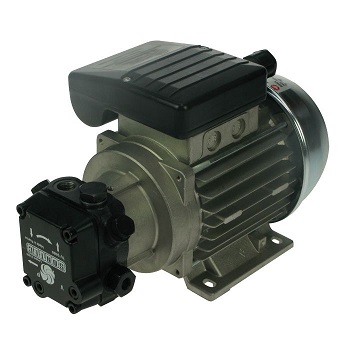A Complete Guide on How to Select Oil Transfer Pump for Diesel Transfer
To refuel diesel-operated vehicles, generators, or transfer fuel from one tank to another, you need effective transfer pumps. In refuelling systems, this pump safely moves fluid from one location to another. As per the Weights and Measures Act of 1985, a diesel or oil transfer pump must be certified Approved before it can be sold. Additionally, these pumps must be precise in their application. There is a variety of transfer pumps that differ in terms of their features and specifications. Their selection depends on specific operations and some crucial factors are explained here:
Ascertain the Required Flow Rate:
The speed of fuel being transferred depends on the flow rate of transfer pump. If the flow rate is high, it will be transferred faster while the process will take more time for lower flow rates. It is measured as litres transferred per minute. When selecting a fuel transfer pump for your industry, determine the exact flow rate required for the type of use.
The general rule says that you should select flow rates according to the size of your vehicle or equipment. For example, choose pumps with flow rate of 50-70 litres per minute for larger vehicles while 40-45 litres per minute is sufficient for the smaller devices and vehicles. Industrial plant equipment needs a larger flow rate due to the huge size of their fuel tanks.
Check the Power Available:
Individual pumps and fuel transfer equipment is available in various electricity supplies including 230v, 440v, and 110v. When choosing an oil transfer pump, adequate power supply is required to run them efficiently. An electric pump can be suitable for immobile fuel tanks and fixed refuelling positions. Before installation, ensure you check the voltage from the mains supply. For substantial heavy duty machines used in industrial environments, a connection of 400v or under is considered to be the safest option. But, if there is no fixed mains supply, you need a low-voltage transfer pump.
Assess the Environment of Applications:
This is another important factor to be considered when selecting a fuel transfer pump for diesel tank operations. The environment in which refuelling happens can affect the performance of a pump. For most field operations which rely on portable refuelling, choose 12-24v pumps. These pumps are ideal for the agriculture sector, quarries, and construction sites. For refuelling of smaller vehicles, manual fuel pumps can also be used. Since these operations need a small quantity of fuel to be transferred, a manual pump is a cost-effective option for small household use.
Check the Flexibility of Design:
The equipment in your plant or unit must be flexible in its design and construction. Whether you need a standalone pump or a complete assembly including a filter, motor, and pump, order from a reputable supplier for the best service and reliability.
All these factors should be carefully considered to buy the best transfer pump for your fuel transfer operations.
